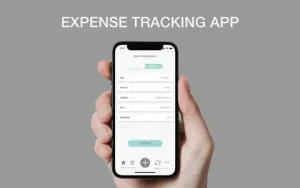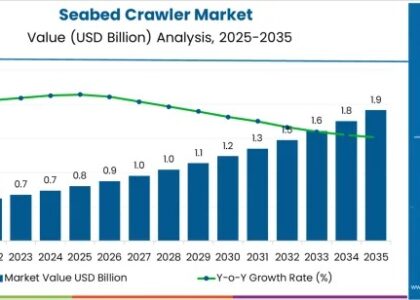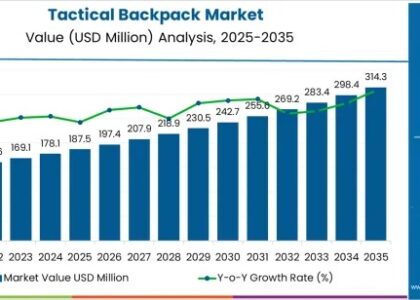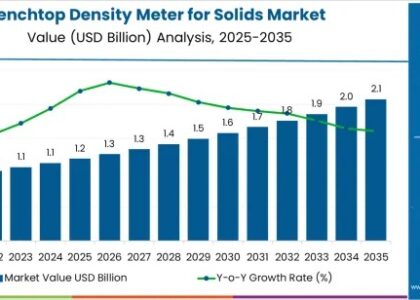
The global Expense Tracker Apps Market is set to witness significant growth between 2025 and 2035, driven by rising digital financial literacy, rapid fintech integration, and the growing need for personal and small business expense management tools. The market is projected to grow at a compound annual growth rate (CAGR) of 10.1%, capitalizing on technological advancements, increasing smartphone penetration, and the shifting preference toward cashless transactions and real-time financial tracking. As more individuals and businesses seek greater control over their financial activities, expense tracker apps are evolving from simple budgeting tools into sophisticated platforms offering multi-account synchronization, automated categorization, AI-based analytics, and cross-border financial insights.
The increasing awareness surrounding personal finance management, particularly among younger demographics such as Gen Z and Millennials, is fueling the adoption of mobile-based financial apps. Additionally, the rise in gig economy workers and freelancers has contributed to demand for streamlined, app-based tools that allow users to manage income, track recurring expenses, set savings goals, and generate tax-compliant reports. In small businesses, these applications are becoming crucial for cash flow tracking, expense approvals, and budgeting, often acting as a complement to broader accounting software ecosystems. Cloud integration, enhanced user interfaces, and app-based automation are reshaping the global landscape of how consumers and businesses manage finances daily.
Get Ahead with Our Report: Request Your Sample Now!
https://www.futuremarketinsights.com/reports/sample/rep-gb-17544
Key Takeaways:
Expense tracker apps are no longer limited to basic record-keeping; they are transforming into essential financial wellness tools by integrating features such as bank synchronization, bill reminders, spending insights, and personalized budgeting recommendations. The surge in demand for real-time data access is pushing app developers to embed artificial intelligence and machine learning for predictive analysis and behavioral finance insights. Moreover, with cybersecurity becoming a central concern, top-tier apps are investing in enhanced encryption and compliance with global data protection standards like GDPR and CCPA.
From a regional perspective, North America holds a significant share in the global market, backed by high fintech adoption, mature digital infrastructure, and a strong culture of personal finance awareness. Europe follows closely with a focus on financial education and cross-border digital banking services. Meanwhile, the Asia-Pacific region is expected to witness the fastest growth, driven by a vast mobile-first population, rising internet penetration, and the shift toward digital wallets and Unified Payment Interface (UPI)-based solutions in countries like India, China, and Indonesia. Latin America and Africa are also emerging as promising markets due to increased smartphone usage and the proliferation of mobile banking services in underbanked populations.
Emerging Trends in the Global Market:
One of the most notable trends in the expense tracker apps market is the integration with open banking APIs, enabling seamless aggregation of data from multiple accounts and financial institutions. This allows users to view a consolidated financial overview and perform real-time expense analysis, improving financial decision-making. Additionally, many apps are now offering multi-currency support and localized versions to cater to a growing base of international users, expatriates, and global freelancers.
The use of AI-powered expense categorization and automated financial forecasting is gaining popularity, allowing users to receive proactive alerts and customized financial advice based on spending habits. Voice-activated commands, chatbot-based finance assistants, and predictive expense modeling are also enhancing user engagement. Subscription-based models and in-app premium features are becoming standard monetization strategies, offering personalized tools, ad-free usage, and advanced analytics.
Another growing trend is the integration of expense trackers with tax preparation platforms, helping users organize deductible expenses and streamline filing. In the SME sector, these apps are expanding into light ERP functionalities such as invoice tracking, vendor payments, and petty cash management, making them indispensable for startups and solopreneurs who require affordable yet powerful tools.
Significant Developments in the Global Sector: Trends and Opportunities in the Market
The broader fintech ecosystem is increasingly viewing expense tracking apps as strategic gateways for user acquisition and financial product upselling. As such, several fintech and banking institutions are acquiring or partnering with expense tracking app developers to offer holistic financial management solutions under a unified digital experience. This presents opportunities for app developers to scale operations, access larger customer bases, and integrate with other financial services such as credit score tracking, investment platforms, and insurance.
Opportunities are also emerging in the corporate wellness and employee benefits space, where employers are offering financial literacy and expense tracking tools as part of their benefit packages. Educational institutions are adopting simplified versions of these apps for financial literacy training among students. These developments point to a widening addressable market that goes beyond individual consumers to institutions, employers, and educators.
Recent Developments in the Market
Recent years have seen an influx of innovation in the expense tracker apps space. Major platforms have launched AI-driven “smart savings” features, which suggest optimized saving amounts based on monthly cash flow and upcoming bills. Some applications have begun integrating with cryptocurrency wallets, allowing users to track not just fiat expenses but also digital asset movements.
New entrants are bringing gamification elements and social sharing tools into budgeting and expense management to enhance user engagement. Meanwhile, leading developers are enhancing UI/UX with minimalist dashboards, intuitive navigation, and real-time notification engines to retain users in an increasingly competitive environment. Furthermore, industry leaders are forming data-sharing alliances with banks and credit unions to enable deeper financial analysis without compromising user privacy or data integrity.
Extensive Market Research: Complete Report and Findings
https://www.futuremarketinsights.com/reports/expense-tracker-apps-market
Competition Outlook
The expense tracker apps market is characterized by a competitive mix of established fintech firms, independent app developers, and financial institutions. Companies are competing on the basis of user experience, depth of analytics, integration capabilities, and data security. The ability to scale globally while adapting to local financial systems and regulations remains a key differentiator.
Key players
Key players in the market include Intuit Inc. (Mint), YNAB (You Need A Budget), PocketGuard, Goodbudget, Spendee, Wally, Money Lover, Fudget, Expensify, and Zoho Expense. These companies are focusing on product diversification, API partnerships, and global expansion to strengthen their market position. Several are also exploring integrations with decentralized finance (DeFi) tools and ethical finance platforms to appeal to younger, value-conscious users.
Key Segmentations:
The market is segmented by platform into Android, iOS, and Web-based, with Android holding a leading share due to global smartphone adoption. By user type, it includes individuals, freelancers, and small-to-medium enterprises, with individuals leading but SMEs contributing significantly to revenue growth. By deployment type, it is divided into cloud-based and on-premise, with cloud-based deployment dominating due to its scalability, affordability, and ease of access. Based on features, segmentation includes manual input trackers, bank-linked trackers, AI-powered apps, and tax-integrated solutions. Regionally, North America leads the market, followed by Europe and rapidly expanding Asia-Pacific.
About Future Market Insights (FMI)
Future Market Insights, Inc. (ESOMAR certified, recipient of the Stevie Award, and a member of the Greater New York Chamber of Commerce) offers profound insights into the driving factors that are boosting demand in the market. FMI stands as the leading global provider of market intelligence, advisory services, consulting, and events for the Packaging, Food and Beverage, Consumer Technology, Healthcare, Industrial, and Chemicals markets. With a vast team of 400 analysts worldwide, FMI provides global, regional, and local expertise on diverse domains and industry trends across more than 110 countries.
Contact Us:
Future Market Insights Inc.
Christiana Corporate, 200 Continental Drive,
Suite 401, Newark, Delaware – 19713, USA
T: +1-845-579-5705
For Sales Enquiries: sales@futuremarketinsights.com
Website: https://www.futuremarketinsights.com
LinkedIn| Twitter| Blogs | YouTube





